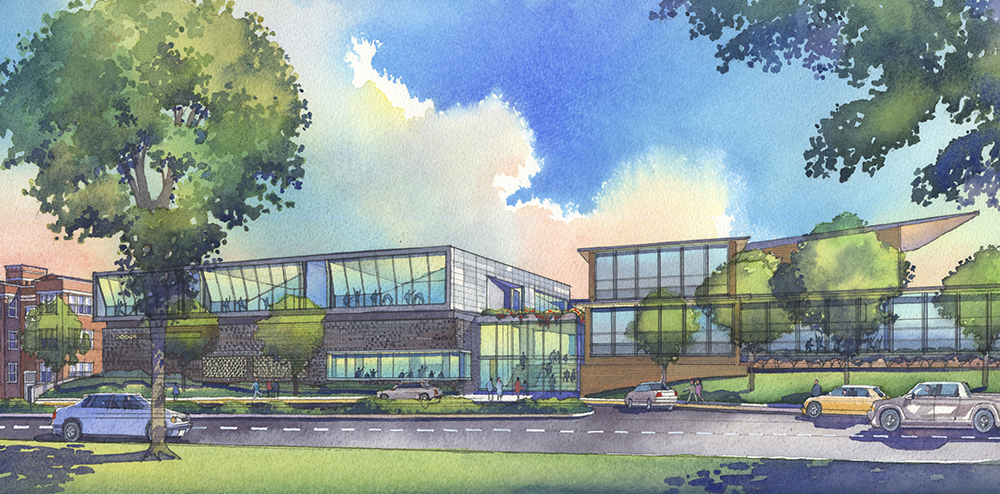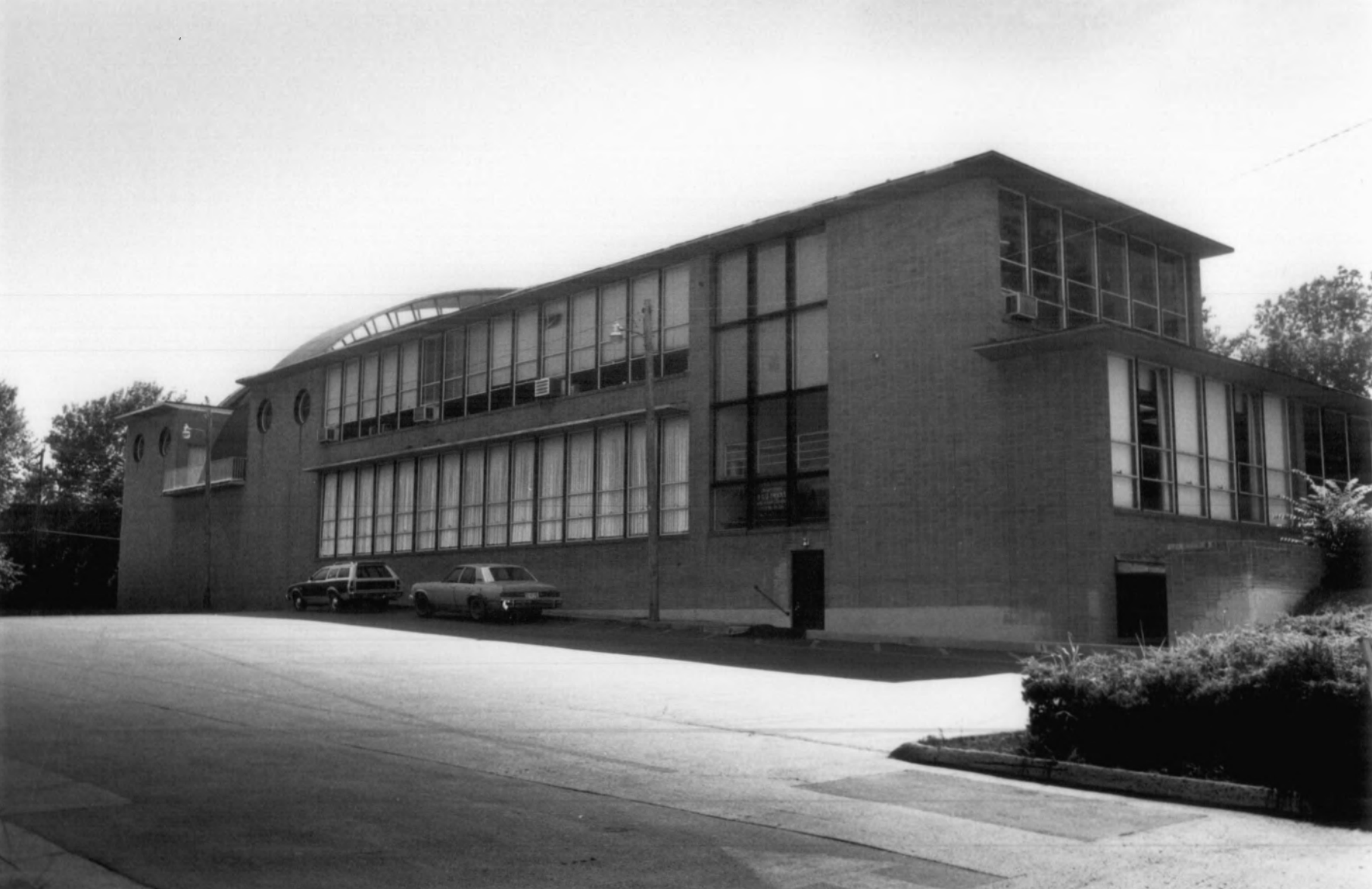In 2013, when I was a reporter for The Wall Street Journal, I flew to St. Louis to learn about the city’s budding startup scene. The city, like the rest of the U.S., was stuck in a decades-long entrepreneurial slump that had left its economy dependent on a handful of big, staid corporations — corporations that were pulling up stakes to head overseas at a rate that alarmed local leaders. (The city’s iconic brewer, Anheuser-Busch, had been sold to a Belgian conglomerate five years earlier.) But an informal coalition of local business leaders, wealthy investors and ambitious 20-somethings weretrying to spark an entrepreneurial revival in the Arch City. They had launched a fund to invest in local ventures, created entrepreneurship clubs at local universities, and converted part of a massive downtown office building into an unlikely startup hub.
I was impressed by the group’s enthusiasm but skeptical of its prospects. Countless cities had tried similar strategies — “incubators,” “accelerators,” venture funds, tax breaks — in an effort to capture some of Silicon Valley’s elusive magic. Few had succeeded.
But maybe my skepticism was misplaced. Data from the Census Bureau released last week showed that in 2014, 9.7 percent of the businesses in the St. Louis metro area were startups less than a year old, up three percentage points from 2009. Only Elizabethtown, Kentucky, saw a bigger increase during that period. In just five years, St. Louis rolled back 15 years of decline in its local startup rate.
The news is grimmer in the country as a whole. The national startup rate fell in 2014 for the second straight year, to 8 percent. The rate at which Americans start businesses has been falling for more than three decades, and while the decline has slowed in recent years, it has shown no sign of reversing. The trend worries economists because new businesses play a vital role in creating jobs, improving productivity and spurring economic growth; some researchers believe the decline in entrepreneurship, and in other measures of economic dynamism such as labor mobility, could be part of the reason the U.S. has experienced such a slow bounceback from the past two recessions.

Over the long term, the decline in entrepreneurship has been strikingly universal, cutting across industries and regions. But as the St. Louis example shows, some areas are seeing signs of progress. From 2009 to 2014, the startup rate rose in about a third of U.S. metro areas and 12 of the 50 states, with Missouri leading the way. Three of the five most-improved cities were in Missouri — St. Louis, Springfield and St. Joseph — and Kansas City was number 12.
| NEW BUSINESSES IN 2014 | ||||
|---|---|---|---|---|
| METRO AREA | TOTAL | SHARE OF ALL BUSINESSES | CHANGE IN SHARE SINCE 2009 | |
| 1 | Elizabethtown, KY | 179 | 9.0% | +4.3 |
| 2 | St. Louis, MO-IL | 4,876 | 9.7 | +3.0 |
| 3 | Bowling Green, KY | 217 | 9.1 | +2.5 |
| 4 | Springfield, MO | 826 | 9.6 | +2.0 |
| 5 | St. Joseph, MO-KS | 171 | 7.5 | +1.8 |
| 6 | Odessa, TX | 220 | 7.5 | +1.5 |
| 7 | Victoria, TX | 145 | 6.1 | +1.3 |
| 8 | Manhattan, KS | 132 | 6.1 | +1.3 |
| 9 | Tallahassee, FL | 528 | 7.9 | +1.2 |
| 10 | Bismarck, ND | 224 | 7.3 | +1.2 |
| 11 | San Angelo, TX | 180 | 8.0 | +1.2 |
| 12 | Kansas City, MO-KS | 3,027 | 8.4 | +1.1 |
| 13 | Redding, CA | 203 | 6.2 | +1.1 |
| 14 | Lexington-Fayette, KY | 681 | 7.5 | +1.1 |
| 15 | Columbus, IN | 71 | 4.9 | +1.1 |
| 16 | Naples-Marco Island, FL | 834 | 9.9 | +0.9 |
| 17 | Burlington-South Burlington, VT | 341 | 6.5 | +0.9 |
| 18 | Pine Bluff, AR | 67 | 5.1 | +0.9 |
| 19 | State College, PA | 152 | 5.9 | +0.9 |
| 20 | Racine, WI | 178 | 5.7 | +0.9 |
On the one hand, it isn’t surprising to see Missouri making progress. Both the state’s public and private sectors have been unusually aggressive in promoting entrepreneurship. The state has its own investment fund, theMissouri Technology Corporation, which invests in local businesses; the fund, together with newly formed private investment groups, have helped the state emerge as a regional leader in startup financing. The Kauffman Foundation — a prominent nonprofit that researches and promotes entrepreneurship — is based in Kansas City.
But it’s hard to know whether those efforts — or those of local boosters in St. Louis — are what’s making a difference. That’s partly because the limited data on entrepreneurship makes it hard to study the impact of government policies. Reliable data on business creation and destruction, even at the national level, has only been available for the past few years; until relatively recently, economists didn’t even know that the startup rate was declining. Even now, the measures are crude, making it hard to distinguish a fast-growing startup from a local mom-and-pop store.
Our knowledge is improving, however. Earlier this month, the Census Bureau, in a joint effort with the Kauffman Foundation, released the firstAnnual Survey of Entrepreneurs, which provides new information on America’s businesses and the people who found them. The report’s most valuable insights will come in future years, as trends become clear, but even the first year’s data contains interesting nuggets. For example, by far the largest share of new businesses in Missouri — nearly a third — are in health care, an area the state has actively promoted. Also interesting: Women own a higher share of startups in Missouri than in any other state. That could be a hint that one way to help turn America’s entrepreneurial slump around is to help more women to start businesses.
“What we’re seeing is a lot more gender and ethnic diversity in our newer businesses than we had in our older businesses,” Secretary of Commerce Penny Pritzker, herself a former entrepreneur, said in an interview. “This is the kind of information that is really vital for policymakers.” Armed with better data, perhaps leaders in both the public and private sectors will at last crack the code for promoting entrepreneurship — and reverse the startup slump in the process.
Hunger in America
Here’s some welcome news: Fewer Americans, and particularly fewer children, are going hungry. According to data released by the Agriculture Department this week, 15.8 million U.S. households, or 12.7 percent, experienced “food insecurity” at some point in 2015, meaning their access to food was limited by financial or other constraints. That’s a big improvement from 2014, when 14 percent of households were food insecure, and from 2011, when the food insecurity rate neared 15 percent in the wake of the Great Recession. The share of households that experienced actual hunger — what the government calls “very low food security” — fell too, though not quite as quickly. Children went hungry in 274,000 households at some point during the year.
Hunger rose during the recession and has been slow to decline in the recovery. The issue has at times become a political cudgel — just Google “Obama” and “food stamps,” or, better yet, don’t — but this week’s report shows the pace of improvement is finally starting to accelerate. That’s just the latest sign that with unemployment falling below 5 percent, the economic recovery is starting to reach some of the most vulnerable American households.
Slower growth
The jobs report earlier this month showed that U.S. employers added 151,000 jobs in August, a solid though somewhat disappointing number. But on Wednesday, the Bureau of Labor Statistics said that pretty much all of those jobs will effectively disappear from the data when it revises its numbers early next year.
Hold on, Jack Welch, don’t go trumpeting any conspiracy theories quite yet. The announcement was part of a standard annual process of “benchmark revisions.” The monthly jobs figures are based on a survey of businesses, which is the only way to make estimates available in a timely manner. But the government also collects a much more precise count of the jobs in the economy via state unemployment insurance records. Every year, it reconciles the survey-based numbers with the more reliable unemployment records and makes whatever adjustments are necessary.
This year’s adjustment is relatively small by historical standards. According to a preliminary estimate from the BLS, there were 150,000 fewer jobs in the U.S. as of March than previously believed. That’s a downward revision of 0.1 percent, smaller than the 0.3 percent average adjustment over the past decade and much too small to change our understanding of how the economy as a whole is doing. By far the biggest revision, on a percentage basis, came in the mining sector, which isn’t surprising; the oil and gas industry, which is part of the mining sector, has been extremely volatile in the past year due to tumbling oil prices. That kind of volatility can be hard to track in real time.
The week ahead
Hiring is up and unemployment is down, but as of 2014, Americans still weren’t making any more money: Median household income has beenessentially flat since the recession ended in 2009. This week, we’ll learn whether 2015 was the year that finally began to change. On Tuesday, the Census Bureau will release its annual report on income and poverty in the U.S. and the individual states.
It’s likely the report will show at least some increase in household income in 2015. Sentier Research, a private firm working with publicly available government data, estimates median incomes began to rise in mid-2014 and are now essentially back to where they when the recession began nearly nine years ago, after adjusting for inflation. Even if Sentier is right, however, it is unlikely that the poverty rate is anywhere close to its prerecession level. The U.S. poverty rate was 14.8 percent in 2014, up from 12.5 percent in 2007.
Elsewhere
Scott Patterson, John W. Miller and Chuin-Wei Yap of The Wall Street Journal tell the remarkable tale of a Chinese billionaire who stockpiled 77 billion beer cans’ worth of aluminum in the Mexican desert.
Inequality is up in the U.S. — that’s well-known. But the picture looks different from one state to the next. Quoctrung Bui of The New York Times charts the trends and finds some interesting patterns.
State and local governments aren’t the only ones that spend public dollars to build private sports stadiums — the federal government does, too. And it’s every bit as bad an idea as it sounds, according to new research from Ted Gayer, Austin J. Drukker and Alexander K. Gold of the Brookings Institution.
Derek Thompson of The Atlantic interviews Economist columnist Ryan Avent about his new book on how technology is reshaping the global labor force.
Article courtesy of Ben Casselman at FiveThirtyEight, see the original story here.


























